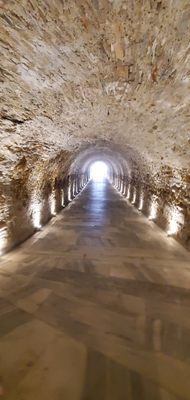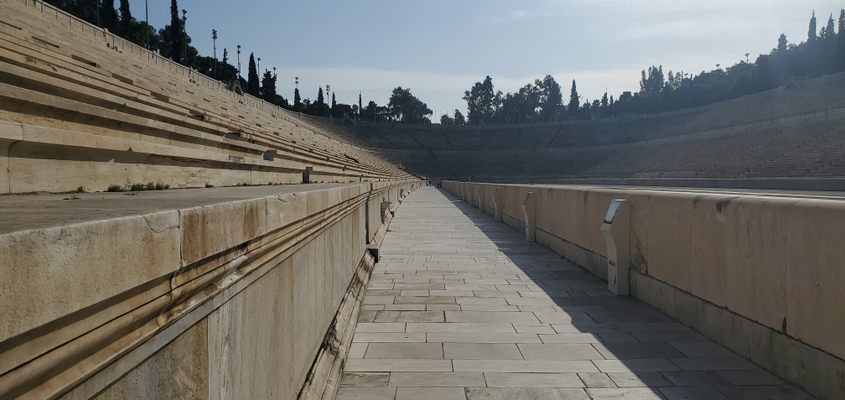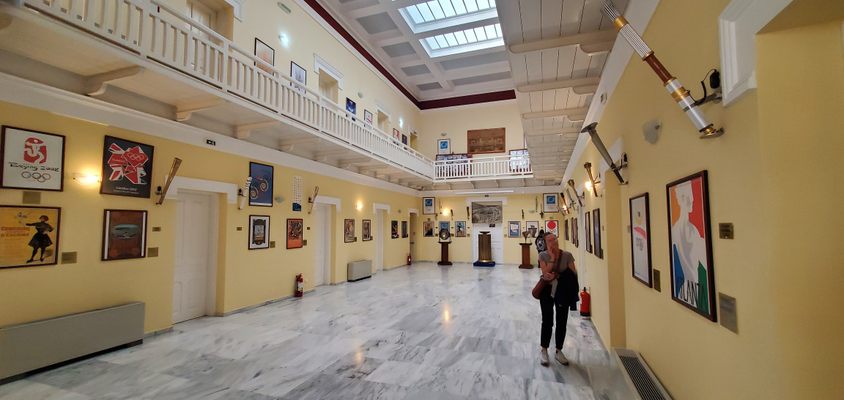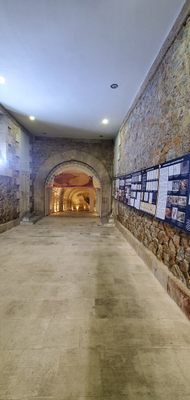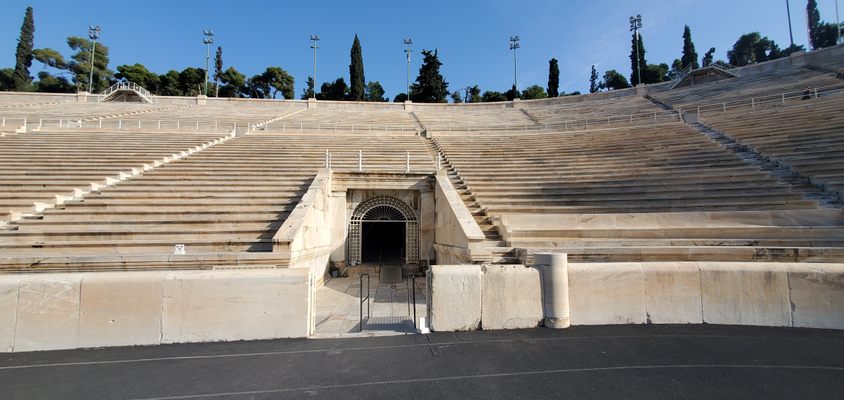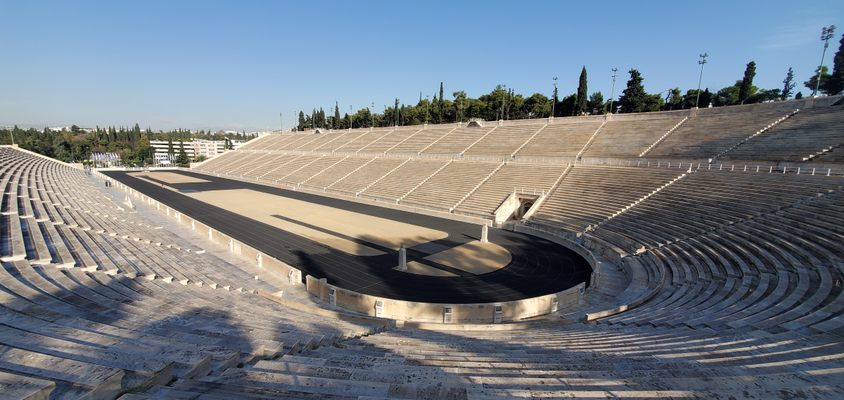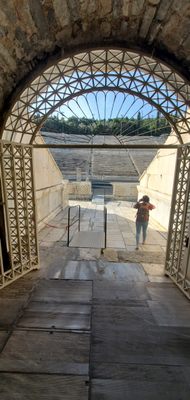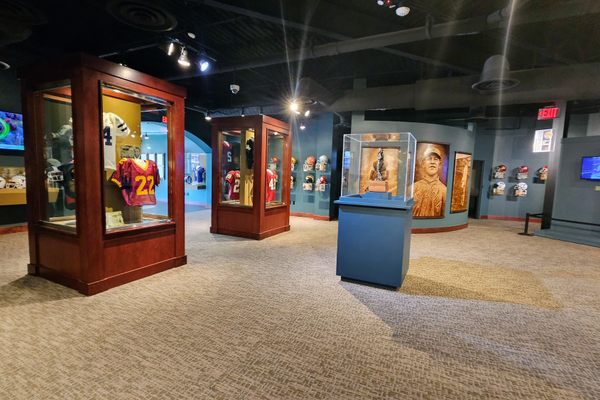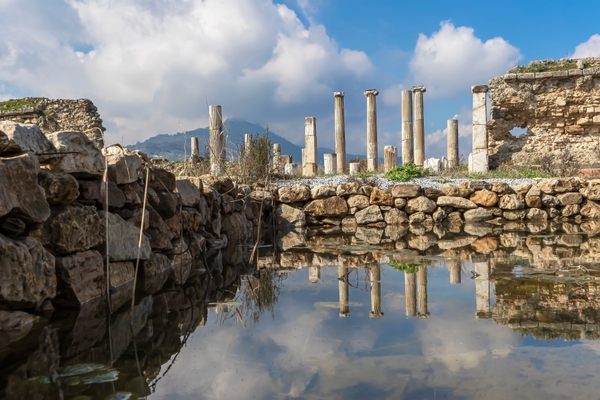About
Hidden beneath the Panathenaic Stadium, the world's only stadium built entirely out of marble, is a secret, ancient passage used by ancient gladiators and modern athletes. The passageway, known as the diodos, is a long, vaulted gallery that dates back to antiquity.
The Panathenaic Stadium has gone through many iterations through the centuries. Greek statesman Lykourgos first built a simple, limestone racecourse on the site in 330 BC for the first Panathenaic Games, a festival featuring athletic competitions, rituals, and religious ceremonies held in ancient Athens. The Games were held every four years in honor of the Greek goddess Athena. Several centuries later, around 140, Athenian Roman senator Herodes Atticus had the racecourse rebuilt in marble and expanded it to fit 50,000 spectators. Soon after that, by the fall of the Roman Empire in 476, the stadium fell into disuse until the 19th century.
Beginning in the 1830s, following Greek independence, archaeological excavations began on the stadium. German-born architect Ernst Ziller carried out later excavations around 1870. The stadium was refurbished and used in the Zappas Olympics in 1870 and 1875, an early attempt to revive the Olympic Games. Then, in 1896, the stadium hosted the first modern Olympics.
The subterranean passageway is located on the east side of the ancient stadium. Even before Lykourgos built the first limestone racecourse, ancient masons constructed this passageway leading to the ravine where the stadium would later be built. Known as the "Hole of Fate," ancient oracles used the passage. Spiritual leaders also walked through the passage before holding ritual animal sacrifices in the ravine. In Roman times, gladiators passed through the tunnel before fighting in the marble-clad stadium. After the stadium fell into disuse, European travelers wrote about young Athenian maidens performing magical rites in the derelict passage.
Today the tunnel leads to a museum featuring torches and posters from all the modern Olympic Games. Every two years, for the winter and summer Olympic Games, the Olympic torch is lit in Olympia, Greece before making its way to the Panathenaic Stadium for the official handover ceremony where the torch is passed to the official hosting city.
Besides the passage, the impressive oval stadium has several interesting details, including curved seating and carved thrones. Here visitors can walk the stands and run the track where the first modern Olympics occurred.
Related Tags
Know Before You Go
The stadium is located opposite the statue of Myron Discobolus. The stadium steps can be slick when wet and are quite steep. Tickets are required to visit. The stadium also offers great views of the Acropolis.
Published
March 6, 2023
Sources
- https://whyathens.com/events/olympic-flame-panathenaic-stadium-athens/
- https://d1wqtxts1xzle7.cloudfront.net/36293402/Trakadas_Alexandria_Troas_2011-libre.pdf?1421434608=&response-content-disposition=inline%3B+filename%3DAlexandria_Troas_Stadium_Survey_Report_o.pdf&Expires=1677523539&Signature=dKld1gDDVl06WedGc7Cn8E-lJf8Zb7Dr~IamobJptNDfTKB24RZ-qw7duwCNZ9Fkxj6Ln22xIGmivgJFN3YFP78gJC6NPq8UhNmQYwgi22b-Kv2dsf5iKoWVsupyfpuTODzaBfyqHmMEVRdneRTOK36kMBpnngvsUJ9HIXh1qiYdZmFOc8WEJ4cKFgokOqBwBkWngPCHZZNIIbS8pTCyeexk9zXbH0sviAc8B-WpkLrKku7M8K0smpPKRb~hnWBu4FUs4uJTKrbMC4tkS4l8feu7DvzCvQshY8i-Eb4KUGeepTStUlaWfP~8N45fEHR7U1ZDB0iE5d69KoWf9lNODg__&Key-Pair-Id=APKAJLOHF5GGSLRBV4ZA
- https://www.google.com/books/edition/The_Panathenaic_Stadium/twwNAQAAMAAJ?hl=en&gbpv=1&bsq=%22Panathenaic+Stadium%22+passage+diodos&dq=%22Panathenaic+Stadium%22+passage+diodos&printsec=frontcover
- http://www.panathenaicstadium.gr/ThePanathenaicStadium/History/tabid/96/language/en-US/Default.aspx
- https://www.greece-is.com/the-mysteries-of-ardittos-hill/
- https://www.thisisathens.org/antiquities/panathenaic-stadium
- https://www.discovergreece.com/experiences/panathenaic-stadium-athens-kallimarmaro
